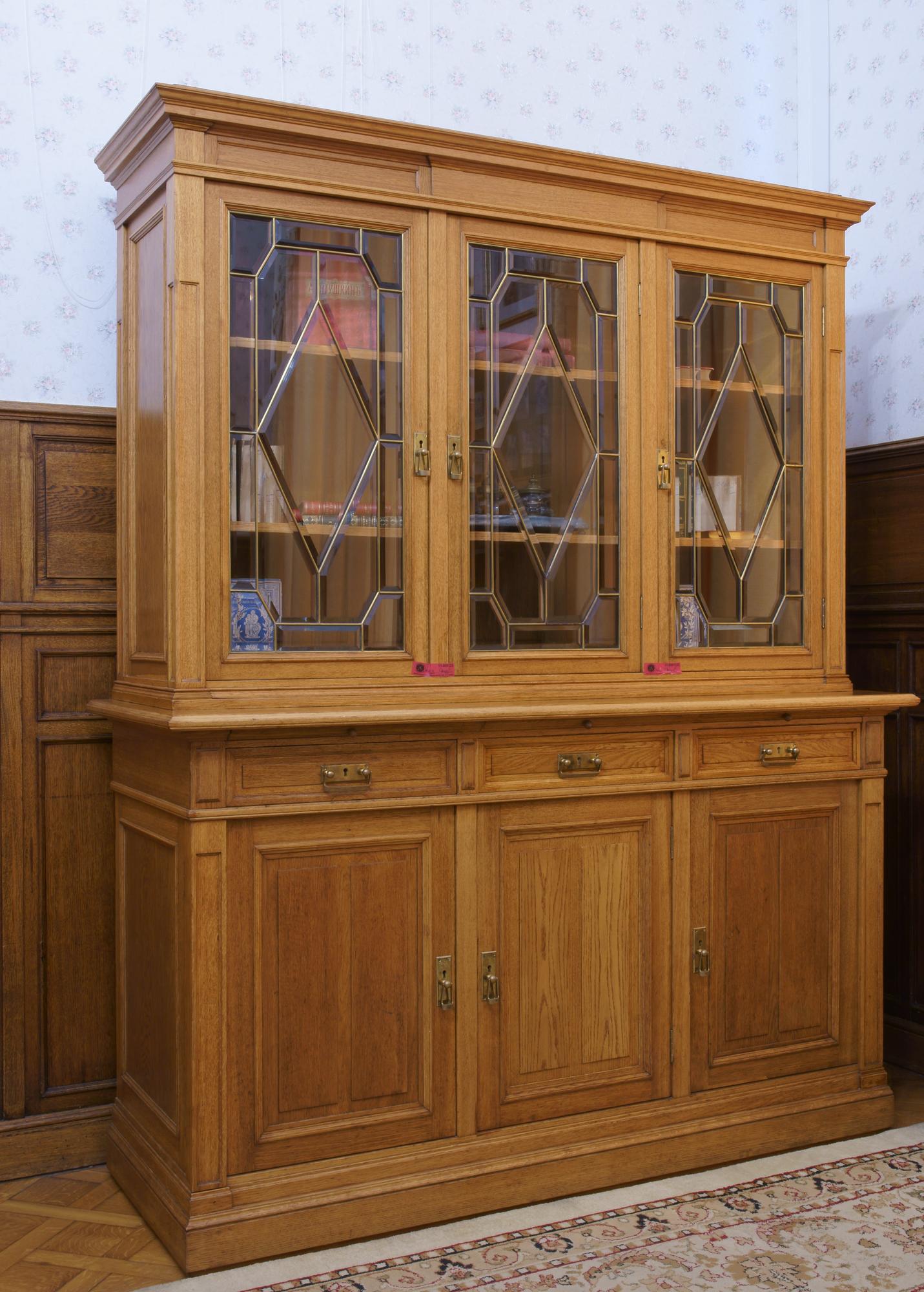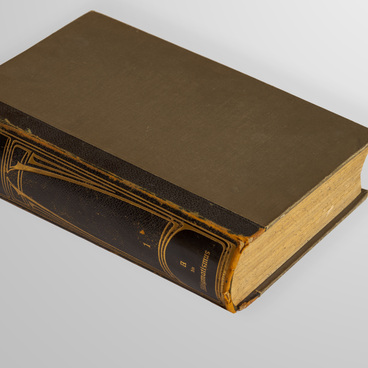The bookcase was acquired by the Livadia Palace Museum in 2013, the year of the 400th anniversary of the House of Romanov. The bookcase still bears the original sticker that says “Classroom of Their Imperial Highnesses the Grand Duchesses. No. 2732”.
In January 1910, Nikolay Krasnov, the architect of the new Grand Imperial Palace under construction in Livadia, commissioned “Jacob & Josef Kohn”, a company well-known in Russian and international markets, to furnish several palace rooms, including the bedrooms, living rooms, and classrooms of the Grand Duchesses. Only well-established, reputable Russian and foreign companies were invited to decorate the interiors of the Imperial Palace.
In the early 20th century, “Jacob & Josef Kohn” distinguished itself as one of the leading furniture makers in the Austro-Hungarian Empire. The firm was particularly famous for its bentwood furniture. Its mass production was launched thanks to the introduction of innovative beech wood bending methods and the engagement of the most fashionable young designers and architects. At their first factory, the wood bending process took only a few minutes compared to two hours at the well-known Austrian company Toneta. The firm was one of the first to adopt the Art Nouveau style, recognized the need to engage designers into the development of new products, and invited the most prominent young architects of the Vienna Secession, including Josef Hoffmann, Otto Wagner, Adolf Loos, Koloman Moser, Gustav Siegel and others.
According to the inventory of the Emperor’s palace in Livadia, the classroom of the Grand Duchesses housed “an oak bookcase with three pull-out drawers, three doors and handles in the bottom section. The upper section had three locked doors with facet mirror glass in a metal casement.” The number in the inventory corresponds to the one on the preserved original sticker of the bookcase, purchased from Lyudmila Farafonova, a Simferopol resident.
In January 1910, Nikolay Krasnov, the architect of the new Grand Imperial Palace under construction in Livadia, commissioned “Jacob & Josef Kohn”, a company well-known in Russian and international markets, to furnish several palace rooms, including the bedrooms, living rooms, and classrooms of the Grand Duchesses. Only well-established, reputable Russian and foreign companies were invited to decorate the interiors of the Imperial Palace.
In the early 20th century, “Jacob & Josef Kohn” distinguished itself as one of the leading furniture makers in the Austro-Hungarian Empire. The firm was particularly famous for its bentwood furniture. Its mass production was launched thanks to the introduction of innovative beech wood bending methods and the engagement of the most fashionable young designers and architects. At their first factory, the wood bending process took only a few minutes compared to two hours at the well-known Austrian company Toneta. The firm was one of the first to adopt the Art Nouveau style, recognized the need to engage designers into the development of new products, and invited the most prominent young architects of the Vienna Secession, including Josef Hoffmann, Otto Wagner, Adolf Loos, Koloman Moser, Gustav Siegel and others.
According to the inventory of the Emperor’s palace in Livadia, the classroom of the Grand Duchesses housed “an oak bookcase with three pull-out drawers, three doors and handles in the bottom section. The upper section had three locked doors with facet mirror glass in a metal casement.” The number in the inventory corresponds to the one on the preserved original sticker of the bookcase, purchased from Lyudmila Farafonova, a Simferopol resident.



